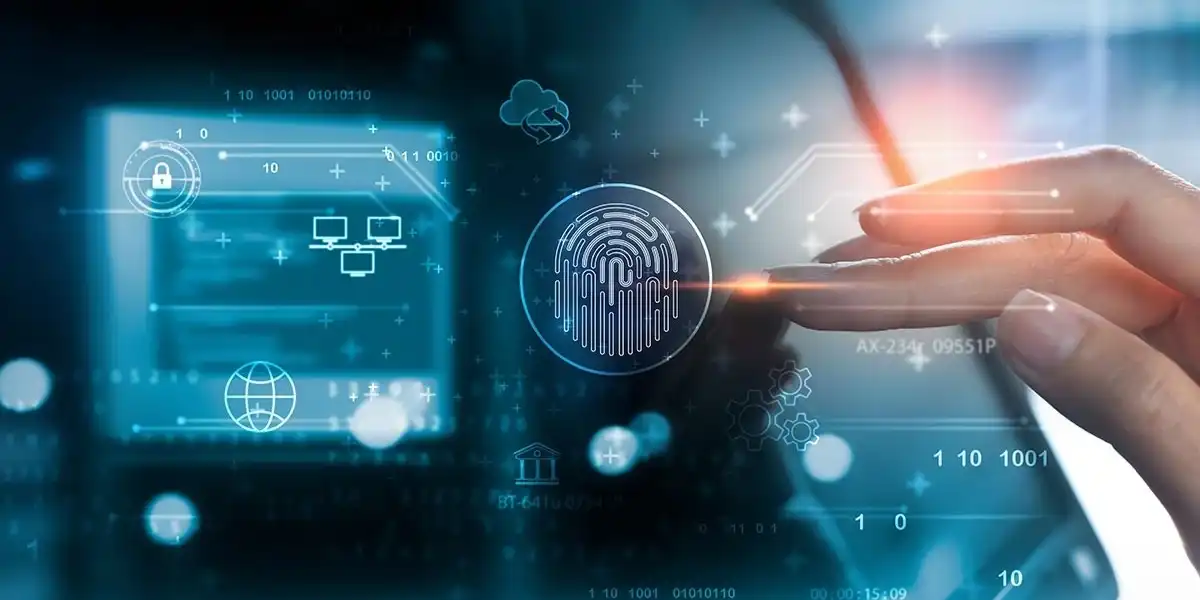
In the digital age, securing sensitive information and ensuring user privacy are paramount concerns for businesses and individuals alike. Biometric authentication has emerged as a promising solution, offering a unique and secure method of identity verification. From fingerprint scanners to facial recognition technology, biometrics has seen significant advancements in recent years. However, along with these advancements come a host of challenges that must be addressed to fully harness the potential of biometric authentication.
Understanding Biometric Authentication
Biometric authentication is a method of verifying an individual’s identity based on unique biological characteristics. These characteristics can include fingerprints, facial features, iris patterns, voiceprints, and even behavioral traits like typing rhythm. Unlike traditional methods such as passwords or PINs, biometric data is inherently tied to an individual and cannot be easily replicated or stolen.
Evolution of Biometric Technologies
Over the years, biometric technologies have evolved significantly, driven by advancements in hardware and software capabilities. Early biometric systems were limited in accuracy and speed, but recent innovations have led to highly reliable and efficient solutions. From simple fingerprint scanners used in smartphones to sophisticated facial recognition systems deployed in airports and banks, biometrics has become increasingly ubiquitous in various applications.
Types of Biometric Authentication
There are several types of biometric authentication methods, each with its unique strengths and limitations. Some of the most common types include:
Fingerprint Recognition: Utilizes unique patterns in a person’s fingerprints for identification.
Facial Recognition: Analyzes facial features such as the distance between eyes and nose for authentication.
Iris Recognition: Scans the unique patterns in the iris of the eye to verify identity.
Voice Recognition: Analyzes vocal characteristics such as pitch and tone for authentication.
Advancements in Biometric Authentication
Recent advancements in biometric authentication have significantly improved its accuracy, reliability, and usability. These advancements have been driven by several factors, including:
Machine Learning and AI Integration
The integration of machine learning and artificial intelligence (AI) algorithms has enhanced the performance of biometric systems. By analyzing large datasets of biometric data, these algorithms can improve accuracy and adapt to individual variations over time.
Multimodal Biometrics
Multimodal biometric systems combine multiple biometric modalities, such as fingerprint and facial recognition, to enhance overall accuracy and security. By utilizing complementary biometric traits, multimodal systems offer greater robustness against spoofing attacks and provide a more reliable authentication mechanism.
Contactless Biometrics
Contactless biometric technologies, such as facial recognition and iris scanning, have gained traction due to their convenience and hygiene benefits, especially in the wake of the COVID-19 pandemic. These technologies enable touchless authentication, reducing the risk of germ transmission and improving user experience in various environments.
Challenges in Biometric Authentication
Despite its advancements, biometric authentication still faces several challenges that need to be addressed to ensure widespread adoption and effectiveness.
Privacy Concerns
Biometric data, being inherently personal and immutable, raises significant privacy concerns. Unauthorized access to biometric databases or misuse of biometric information can lead to serious privacy breaches and identity theft.
Security Vulnerabilities
Biometric systems are susceptible to various security vulnerabilities, including spoofing attacks, where attackers use fake biometric samples to impersonate legitimate users. Ensuring robust anti-spoofing measures is essential to mitigate these risks.
Ethical and Legal Implications
The collection and use of biometric data raise ethical and legal questions regarding consent, data ownership, and potential biases in algorithmic decision-making. Addressing these concerns requires transparent policies and regulatory frameworks governing the use of biometric technologies.
Future Trends in Biometric Authentication
Looking ahead, several trends are expected to shape the future of biometric authentication:
Continuous Authentication: Moving beyond one-time authentication, continuous authentication methods that continuously monitor user behavior and biometric traits will gain prominence.
Biometric Blockchain: The integration of biometric authentication with blockchain technology offers enhanced security and privacy by decentralizing biometric data storage and authentication processes.
Standardization and Regulation: The establishment of industry standards and regulations will play a crucial role in ensuring interoperability, security, and ethical use of biometric technologies.
Final Words
In conclusion, biometric authentication holds immense potential as a secure and convenient method of identity verification in the digital age. Despite facing challenges related to privacy, security, and ethical considerations, ongoing advancements and innovations are paving the way for a more secure and reliable biometric authentication landscape. By addressing these challenges and embracing emerging trends, we can harness the full benefits of biometric authentication while safeguarding user privacy and security.
Commonly Asked Questions
Q1. Are biometric authentication methods foolproof?
While biometric authentication offers high accuracy and security, no system is entirely foolproof. It’s essential to implement robust anti-spoofing measures and regularly update biometric systems to mitigate potential risks.
Q2. What are the privacy implications of biometric authentication?
Biometric data is highly personal and sensitive, raising significant privacy concerns. Organizations must implement strict data protection measures and obtain explicit user consent when collecting and using biometric information.
Q3. How do multimodal biometric systems improve security?
Multimodal biometric systems combine multiple biometric modalities, making it harder for attackers to spoof or deceive the system. By utilizing complementary biometric traits, multimodal systems enhance overall security and accuracy.
Q4. What role does regulation play in biometric authentication?
Regulation plays a crucial role in governing the ethical use, storage, and sharing of biometric data. Clear regulatory frameworks ensure compliance with privacy laws and promote responsible deployment of biometric technologies.
Q5. What are some emerging trends in biometric authentication?
Emerging trends in biometric authentication include continuous authentication methods, biometric blockchain integration, and the establishment of industry standards and regulations to ensure interoperability and security.
Advertisement








